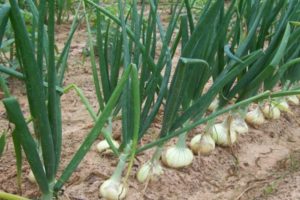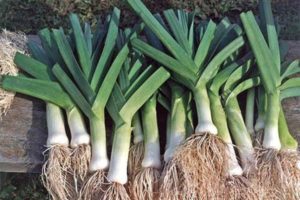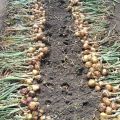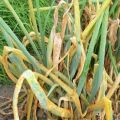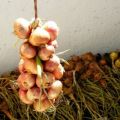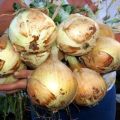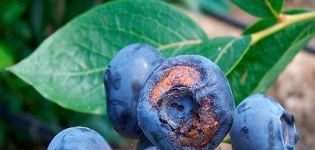How to grow and store Crimean and Yalta onions in the middle lane?
Onions are grown everywhere in our country. In different regions, certain varieties are popular, differing in growing conditions and taste. Crimean onion is devoid of unpleasant bitterness, which most of us do not like so much. It is not difficult to grow this plant, but how to store the Yalta onion so that it does not deteriorate is a question requiring study.
Characteristics of the variety
Yalta, or as it is also called the Crimean bow, was brought to the peninsula by travelers in the 19th century. This is a striking representative of the Mader flat species, known all over the world. It is well suited for use in fresh salads as it has no bitterness. The description of the variety suggests that there is little essential oil in the composition, due to which the human mucous membranes are not irritated during processing. It is interesting that such properties are preserved only in plants that grew on the southern coast of the Crimean peninsula.

A characteristic feature of the Yalta onion is a pink or purple color of protective scales. But thick juicy scales have a traditional white color, in rare cases - pale pink. On one bulb there can be no more than 7 juicy scales, the thickness of which is about 7 millimeters. The shape of the head is flattened, round.
Yalta onion has a long ripening period. The growing season of this variety is 140–150 days from the moment of germination. It is suitable for cultivation in the middle lane, but changing climatic conditions will entail a change in taste.
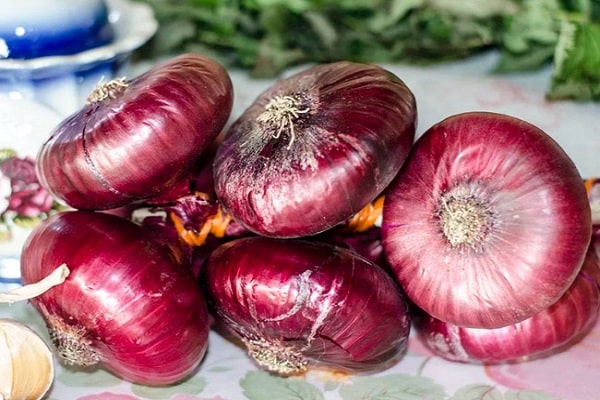
Distinctive features
The breeders have done a great job and developed new varieties that look like the Yalta onion. This is used by unscrupulous sellers who pass off bulbs similar to it as Crimean. Naturally, they are deprived of all the properties of their eminent brother. In order not to acquire a fake, you need to know the main distinctive features that the Yalta onion possesses:

- the number of juicy flakes in the cut should not be more than 7 pieces;
- real Yalta onion lacks a characteristic smell;
- this variety does not cause lacrimation and does not irritate the mucous membrane, it is comfortable to work with it;
- when removing a taste sample, bitterness and pungency are not felt;
- heads ripen in July;
- the storage period of the harvested crop does not exceed 5 months.
Considering the latter fact, we can safely say that it is no longer possible to buy Yalta onions in the spring or early summer, it simply will not last until that time.

Growing features
Yalta onions are grown in seedlings even on the peninsula. In the middle lane, they do the same. Good full-fledged heads of high quality are obtained in 3-4 months.To grow seedlings, you will need ordinary boxes designed for this purpose. A layer of fertile soil is poured into them and the preparation of seeds is started.
Sowing dates are usually mid-February. To speed up the sprouting process, the seeds of the Yalta onion are soaked for 2 days in water. Further, they are dried to facilitate sowing. Experienced gardeners wait for the moment when some of the seeds hatch and only then begin to sow them.
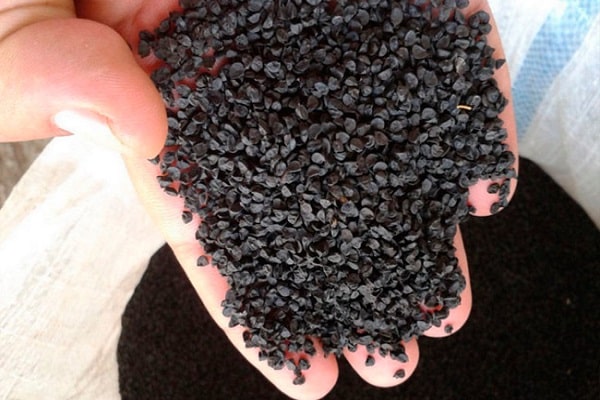
Grooves are made in the soil with a depth of 1 centimeter. A distance of 5 centimeters is left between them. Seeds are spread at a distance of 1 centimeter from each other. Watering the Yalta onion is carried out from a spray bottle. Otherwise, you can wash out crops. The box is placed in a warm room with good lighting.
As soon as the shoots of the Yalta onion begin to appear, the temperature is maintained at +16 ° C during the day, and not higher than +10 ° C at night.
In order to grow the Crimean onion in a seedling way, the soil must not dry out too much. Watering is stopped exactly one week before diving into open ground. During this time, the seedlings are hardened. During the day, the boxes are taken out into the street. If there is no threat of night frost, then you can leave the plants overnight.
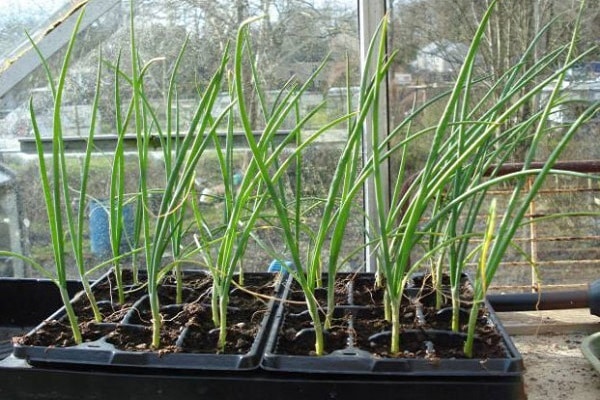
During the period of growing green mass, Yalta onion requires a large supply of nutrients. Once every 2 weeks, fertilizing is carried out with complex mineral fertilizers. Diving into open ground is carried out only when there are already 3 feathers on the young plant, and its height is 20 centimeters. As a rule, it takes 2 months before that from the moment of sowing the seeds.
Features of outdoor care
For the successful cultivation of Yalta onion seedlings, its transplant is carried out on a cloudy, cool day. In this case, the plants are less sick and are better accepted. To transplant young bulbs, it is necessary to cut rows on a previously prepared and fertilized bed in the fall. The distance between them is maintained at least 25 centimeters.
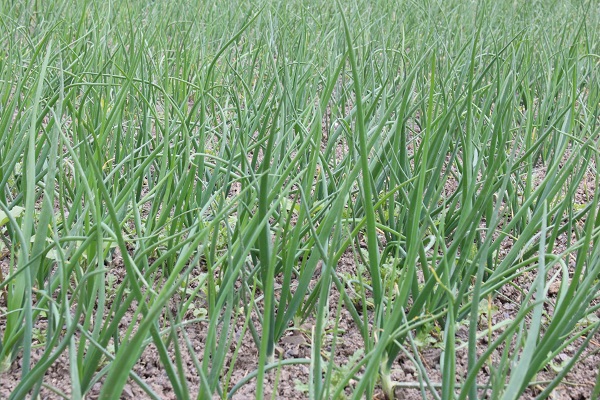
Yalta onions are planted 10 centimeters apart. The depth is chosen the same at which they grew in the box. According to this scheme, up to 45 Yalta onion seedlings can be planted on 1 square meter. Watering should be carried out from a watering can equipped with a spray. This is done regularly until the plants take root. A week later, the first feeding with organic fertilizers is carried out (solution of mullein or chicken droppings).
In the process of growth, Yalta onions are fed every decade with potassium-phosphorus fertilizers. They continue to do this until the end of July. Along the way, the soil is loosened and weeds are removed. As soon as the tops turn yellow and lie on the ground, and the bulbous necks become soft, it is time to harvest.
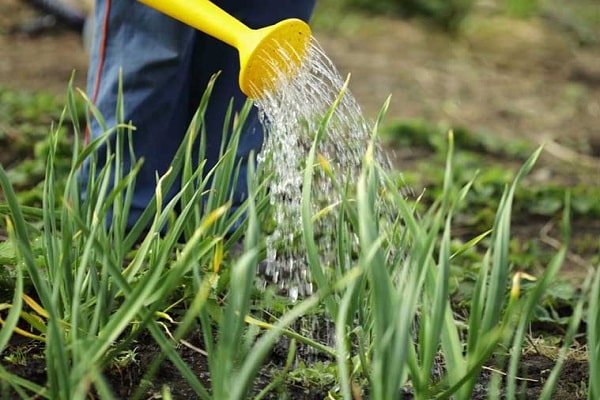
Harvesting and storage
Bulbs that have been grown on a plot of land must be properly preserved. Harvesting begins later than other varieties and falls in August or early September. Yalta onion ripens at this time and reaches the stage of technical maturity. It is impossible to delay the time of harvesting, because due to autumn rains, it can rot.
To avoid problems during storage, they try to harvest Yalta onions in dry weather, when the temperature has not yet dropped below + 10– + 15 ° С. In the room where the crop will be stored, an ideal air humidity of 50% is considered. It is allowed to store onions in an apartment if the temperature is not too high.
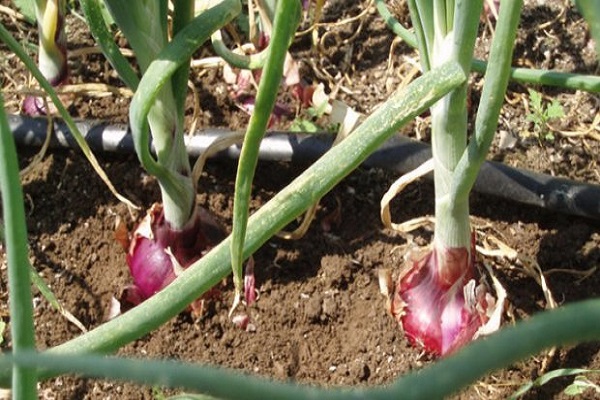
After the bulbs are removed from the garden, they are well dried, and then they begin to weave braids. Yalta onions are woven together using its own tops. Many weaving technologies are known, which one to give preference is a matter of your taste.So that the heads do not touch each other, they are suspended in the cellar from the ceiling and left for storage.
Even if ideal conditions were created and the premises were carefully selected, your harvest will not last for more than 5 months, therefore, during this time you must try to realize it.
Among salad varieties, Yalta onion, the widespread cultivation of which is gaining momentum, is the leader. It is distinguished by excellent taste and is devoid of major disadvantages. Only many people noticed that buying seedlings in the Crimea during their holidays, and then growing them in their country house, it turns out not such a tasty product. The reason is that the Crimean onion, the cultivation of which has recently begun to be practiced in the middle lane, tends to change characteristics depending on the place of growth. And he does it not for the better. Therefore, you should not complain and look for the reasons for your failures - they are genetically inherent in the plant. Real Yalta onions can be grown only on the southern coast of Crimea.
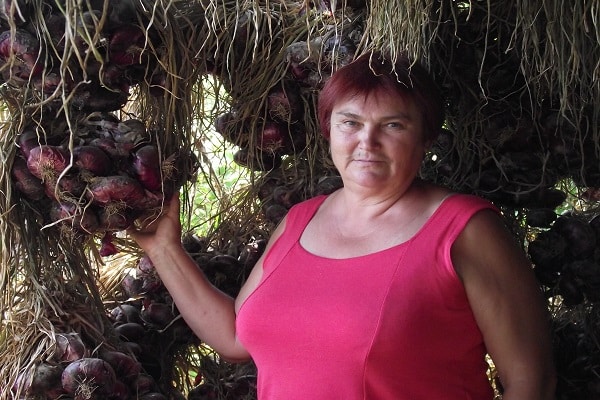
By the way, the garden culture has only an indirect relation to the name of the city of Yalta. In fact, he was not bred in this place, and almost no one is engaged in agriculture in the resort town. Most likely, onions were purchased in the vicinity of Yalta by travelers during their holidays, hence the name.
The characteristics of other varieties of onions that were grown in this area and were exported to other regions for cultivation do not change so dramatically. But Crimean farmers like it: such a kind of insurance against counterfeits. If a person wants to enjoy a healthy and tasty product on his table and at the same time not shed crocodile tears, then he will certainly buy goods from them.
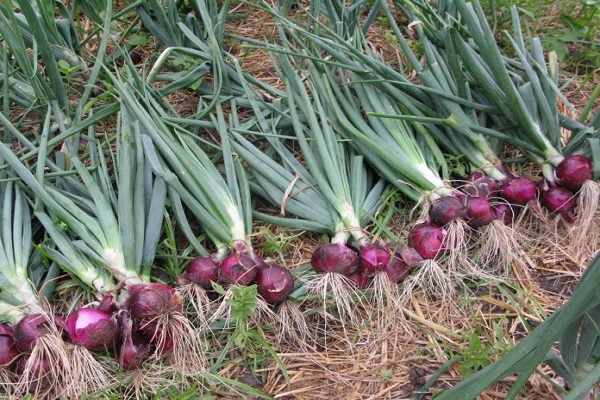
Small shelf life made people think about how to preserve Yalta onions longer than the prescribed period in order to be able to cook their culinary masterpieces. It was then that the idea of its conservation and pickling appeared. Of course, this is no longer a fresh onion, however, if properly prepared, it does not lose its properties and can be used to prepare a variety of dishes.
